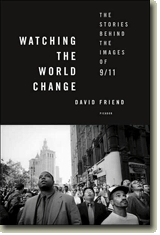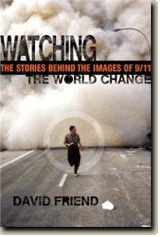February 2008 Archives
« Previous · Home · Next »
February 24, 2008
OUR COMMON BONES
“Inside Terrorism: The X-Ray Project” is on view in Croton Falls, N.Y., at the Schoolhouse Galleries through March 15.
The traveling exhibition, curated by photographer Diane Covert, is a collection of CT scans and X-rays of terror victims, extracted from the brimming files of the Shaare Zedek Medical Center and Hadassah Ein Kerem Medical Center in Jerusalem.
As described by Georgette Bouveia in a short review in yesterday’s White Plaines Journal-News: “The works reveal a smashed hand and arm; a piece of a bomber’s watch embedded in a victim’s neck; and ordinary bolts and nails…studding vertebrae."
Covert’s stark and powerful point: In medical imagery of victims of bomb blasts in Israel and the West Bank, no viewer can distinguish between a Jew or a Muslim, a civilian or a combatant.

February 18, 2008
DON'T LOOK! NOW!!
Prurience? Propaganda? Or the proper outlet for outrage?
Fox News is reporting that there is some recycled footage, now on the Internet, that supposedly shows yet another gruesome video from the al-Qaeda archive: Iraqi prisoners allegedly being drenched in flammable fluid and then set on fire. The tape is extremely graphic and unsettling.
Among the questions the clip raises: By carrying the footage are Web sites perpetuating the al-Qaeda propaganda cause through the pure prurience of yet another snuff film? Or is the tape, as it purports to be, part of a counter-al-Qaeda effort? Do the violent scenes help to recruit or to incriminate?
As it happens, this same dichotomy is addressed by Virginia Heffernan in a piece in today’s New York Times that deals ostensibly with violent images on so-called “gross-out” Web sites. Quoth Heffernan, in a manner reminiscent of Susan Sontag’s Regarding the Pain of Others:
“Let’s not be naïve: the motives of journalists, human rights workers, documentarians and doctors who draw attention to nauseating images are not always pure. In his terrific book about nonfiction writing called Follow the Story, James B. Stewart argues that ‘writers cannot count on anyone to read their work out of a sense of obligation, moral duty or abstract dedication to “being informed.” ’ Instead, he says, the best stories in journalism engage an amoral quality in the reader: curiosity. Stories that are strange work best; we want to see what’s weird, what’s unexpected, what we’re not supposed to see.
“We look at the Abu Ghraib photos, or skateboard wipeouts, or even dermoid cysts, because we’re curious. Curiosity powers every Internet vision quest. It’s nothing to be ashamed of. But we shouldn’t call it courage either.”
February 6, 2008
OVERT SURVEILLANCE
LONDON -- I'm in England and will be giving a talk tomorrow night about Watching the World Change at the Reform Club. While reading this morning's Times of London, I was disturbed to read yet another account, this one by journalist Sean O'Neill, of the pernicious surveillance culture in the U.K., a subject I explore at length in the book.
O'Neill, who has been reporting on a prison-bugging scandal this week, writes in today's "News Analysis" column, under the subhead "Surveillance Row":
"Organisations such as MI5 and MI6, GCHQ and the Serious Organised Crime Agency use bugging and tapping as everyday tools of their trade. But surveillance and interception are also increasingly used by police forces across the country. The rural West Mercia Constabulary, for example, recently advertised for 'substantive constables' to fill posts in its Covert Authorities Bureau.
"In prisons, Category A prisoners routinely have their phone calls taped and a police intelligence unit is based at Prison Service headquarters.
"As you go about your daily activities, you can be followed by men or women from the Office of Fair Trading, the Health & Safety Executive and the Rural Payments Agency. The Charity Commission, the Food Standards Agency and the Royal Pharmaceutical Society of Great Britain can seek authorisation to conduct surveillance operations against those they suspect of wrongdoing.
"Every one of the 474 local authorities in the country has the same right and can seek permission to examine your phone records, text messages and e-mail history.
"Sir Christopher Rose, the Surveillance Commissioner, reported a rise in the number of local authorities using their powers of surveillance. 'Covert activity is still most often used by departments that deal with trading standards and with antisocial behaviour and by those that administer benefits,' he said in his annual report."
It would be chilling, I guess, if it didn't seem so widely accepted among the general public, spooked by the 7/7 attacks, the foiled "doctors' plot," and other arrests and crackdowns.
CONFIDENTIAL....PLEASE! Speaking of Big Brother, check out a satire that Marc Kravitz and I have posted at VanityFair.com today, called "Confidential...Please!"


